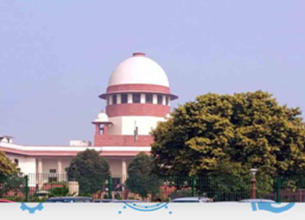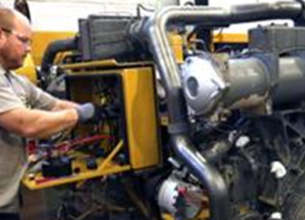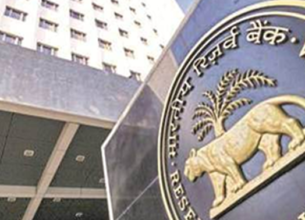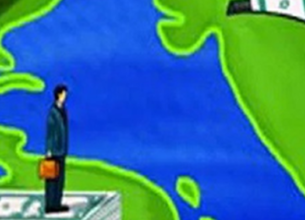A COMPLETE OVERHAUL OF INDIAN RAILWAYS
28, Dec 2019

Why in News?
- India has the fourth largest railway network in the world. It has come a long way since 1950-51 in terms of number of trains and quantum of traffic carried. However, it has been highlighted that Indian Railways may end up as burden on the national economy due to the number of issues.
- For instance, according to the recent CAG report, the operating ratio of Railways has increased to 98.4%, which is considered to be the highest in the last 10 years.
- In this regard, let us discuss in detail about the various problems with the Indian Railways and what can be done in order to improve its performance.
Existing Problems with the Indian Railways:
1. Decline in share of Freight Traffic: The modal share of railways in the transportation of surface freight has declined from 86.2 per cent in 1950-51 to 33 per cent in 2015. This decrease is on account of shortfall in carrying capacity and lack of price competitiveness. The Indian Railways has kept the passenger fares at lower value while it has increased the freight charges to compensate for this loss. Hence, the cross-subsidization of low passenger fares by artificially high freight rates has led to shift in favour of road transport, for both freight as well as short distance passenger traffic.
2. Under- Investment: The expenditure on the railways as a percentage of transport expenditure declined from 56 per cent in 1985-90 to 30 per cent in 2007- 12. The under-investment in the sector has crippled operations and Hampered Capacity Augmentation.
3. Organizational structure: Delays in decision making, inadequate market orientation lead to slow turnover times and delays in the implementation of railways projects. For instance, introduction of new trains, provision of halts and establishment of new projects are taken on the basis of political considerations rather than commercial considerations.
4. Internal generation of resources: The lower relative cost of transporting freight by road has led to a decline in the share of the railways. Low and static prices for the passenger segment have also contributed to low internal generation of resources.
5. Safety and poor quality of service delivery: There have been a number of accidents and safety issues in the recent years. Poor cleanliness of trains and stations, delays in train departures/arrivals, quality of food and difficulties in booking tickets are key issues.
6. Higher Operating Cost: According to CAG’s Report, the operating cost of Indian railways has increased to 98.4% which means that Indian Railways is spending around Rs 98 to earn Rs 100.
The higher operating cost of the Indian railways is on account of higher expenditure due to salaries and pensions of the Railway personnel. The higher operating cost has in turn reduced the capability of the Indian railways to undertake capital investments to improve the railway network within India.
Few Recommendations to Address the Problem:
- The Bibek Debroy committeeon Railway Modernisation and Anil Kakodkar Committee on improving railway safety have given a number of recommendations to improve the performance and safety of Indian railways. Some of these recommendations are:
1. Rationalize fare structures and subsidies: There is a need to rationalise the passenger fares and freight charges by ending the cross-subsidisation model presently followed by railways. Freight tariffs should be competitive with the cost of road transportation so that there is increase in the modal share of Railways.
2. Independent Regulator for Railways: There is a need to set up an Independent Railways Regulatory Authority. Such an authority would not determine the tariff, but it will monitor whether the tariff is market determined and competitive. It will also bring in specialised and technical expertise which is needed to manage the Indian railways.
3. Focus on Core Activities: Apart from its core function of running trains, Railways also engages in non-core activities such as running schools, hospitals and a police force. To enable to perform its core-function effectively, railways would have to reduce costs on these non-core activities that are non-remunerative in nature, and instead improve the efficiency of running trains by greater resource allocation to this function. Non-core activities can be outsourced to Private Entities.
4. Accounting Reforms: The current accounting system does not provide details of the cost of various activities and services, such as introduction of new trains and scheduling of stops. It neither tracks assets nor assesses liabilities. Consequently, it becomes difficult to compute the costs and benefits of any project or activity. Hence, in this regard, there is a need to adopt accounting reforms to track these details. This will enable us to understand how efficiently the Indian railways is managing its finances.
5. Financing of Projects: The Finance Minister has recently stated that Indian railways would need an investment of around Rs 50 lakh crores between 2018 and 2030. However, the financial status of the Indian Railways is at ‘precarious’ situation which has a direct bearing on the modernization, upgradation of technology, replacement of the old assets and safety aspects of railways. Hence, in this regard, there is a need to improve the expenditure management of Indian railways and improve the internal revenue generation. For instance, the Railways can lease huge amount of land that it holds to the private sector for certain duration of time and earn revenue. Similarly, railways can enter into PPP agreements for the development of stations.
6. Better utilization of existing infrastructure to address congestion: There is a need to prioritize ongoing projects to improve capacity utilization. Timely completion of these projects will generate more revenue.At the same time, we need to maintain and upgrade the existing network to ensure that supply keeps up with demand.
7. Safety of Railways: The Kakodkar committee had recommended for an investment of Rs 1 lakh crores over a period of 5 years to improve the safety of Indian railways. It had recommended the creation of a statutory Railway Safety Authority with enough powers to have a safety oversight on the operational mode of Railways.
Proposed Organizational Restructuring:
1. Indian Railway Management Service (IRMS):
- The Union Cabinet approved an organisational restructuring of the Indian Railways, including the merger of eight Group A services into a central service called the Indian Railway Management Service (IRMS), which is expected to end departmentalism, promote smooth working and expedite decision-making.
2. Changes in the Railway Board:
- Currently, the board comprises eight members, each representing their service, with the chairman being the first among equals. The structure has remained unchanged since 1905.
- The Board will now consist of five members– Chairman, along with four members responsible for infrastructure, operations and business development, rolling stock and finance. There will also be a DG (HR) under the Chairman.
- In addition, the board will have independent members, who will be experts in fieldssuch as finance, industry and management, much like independent directors on corporate boards.
- The chairman will have the CEO tag attachedand will be the final authority on all Issues.













